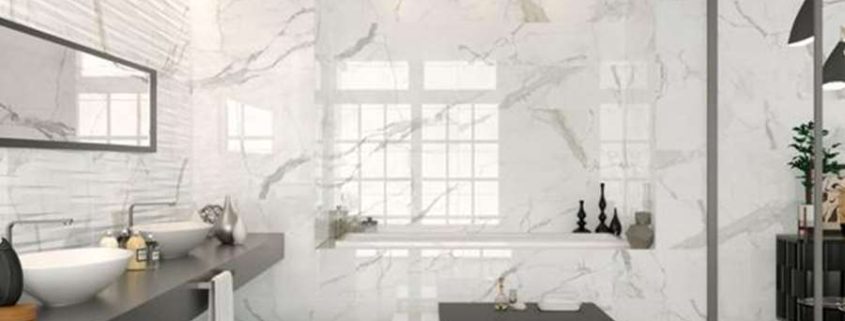How to Identifying Already-Installed Tiles?
Note the location in which the tiles have been installed. Ceramic and porcelain tiles are each better suited to distinct locations in a home. Porcelain is often installed in laundry rooms, bathroom floors, bathroom walls, shower stalls, and around bathtubs. Porcelain tile is more durable than ceramic because of its hardness, and porcelain is also more resistant to moisture. Ceramic tile, on the other hand, is most often installed as flooring in high-traffic areas such as an entry way or a heavily-used hallway.
See if the tiles are stained or discolored. If so, they’re almost certainly ceramic. Porcelain tiles are very dense and have been designed to be impervious to stains. So, most staining substances (e.g., red wine) can be wiped off of them easily. Ceramic, on the other hand, is light, porous, and can absorb staining materials relatively easily. Stains on ceramic tiles could also come from foot traffic (dirt, mud, snow, etc.) if the tiles are located in an entryway.
Inspect the faces of the tiles for uniform size and shape. The “face” of the tile is the top portion which faces upward or outward on installed tiles. Porcelain tiles have sharply-formed faces which are all exactly uniform in size. Due to their durability, porcelain tiles can be “rectified,” or cut to highly specific dimensions for complete uniformity. This also allows the porcelain tiles to be grouted together with only small gaps between tiles. If there is any discrepancy between the size of the tiles design , you’re dealing with ceramic tile.
Use a liquid cleanser. If the stain on your marble tile is oil-based, such as grease or cosmetics, you can usually remove it with a soft liquid cleanser. Use a gentle household detergent on fresh stains and ammonia or mineral spirits on older, more stubborn stains. Dilute your chosen cleanser with warm water, and use a soft cloth to apply it to the stained area. Use a clean, damp cloth to wipe the cleanser off and a clean, dry towel to dry the marble. You can use the cloth dampened with your cleansing solution to gently scrub at the stain, but don’t be too rough to avoid scratches.
Try hydrogen peroxide. If your marble tile is stained by an organic material, such as food, coffee, or tea, hydrogen peroxide is usually the most effective cleanser. Mix 12 percent hydrogen peroxide with several drops of ammonia, and apply it to the stained tile with a cloth. Use a clean, damp cloth to wipe the hydrogen peroxide off, and thoroughly dry the surface with a soft, clean towel. You should only use hydrogen peroxide to clean your marble tile if it is a light color. Hydrogen peroxide may bleach dark marble tile.







